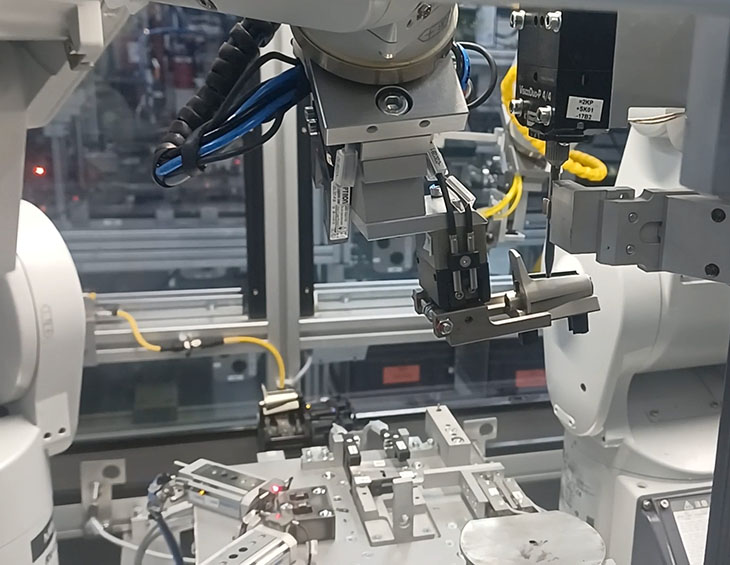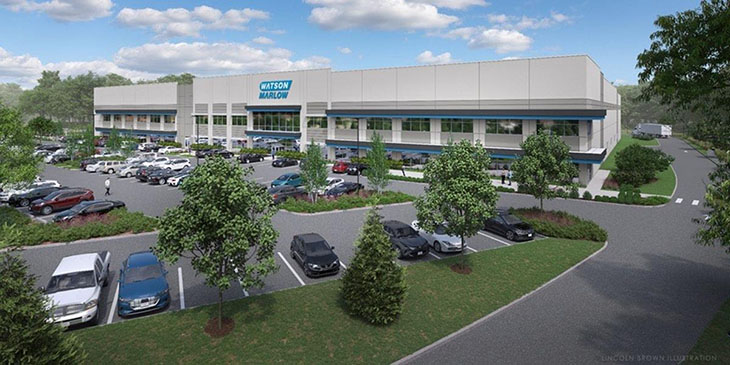Emily Newton is an industrial journalist with over five years experience covering the manufacturing sector. As Editor-in-Chief of Revolutionized, she also covers trends in other industrial sectors, like logistics and engineering. Subscribe to her newsletter to read more.
Edge computing significantly improves how people can work with data, especially since it involves processing the information closer to its source rather than sending it to distant cloud locations. Here are five reasons why many company leaders increasingly want to invest in manufacturing edge solutions.
1. Accelerated Data Processing
Outdated information about what goes on in a manufacturing plant can quickly become costly and disrupt productivity. Managers must assess changing conditions and respond accordingly. Fortunately, vastly reduced latency is one of edge computing’s main benefits. It allows decision-makers to get dependable information faster and act on it sooner than before.
One recently introduced platform that uses edge computing can process up to 500,000 data points per second with latency under 50 milliseconds. Manufacturers can also enjoy that kind of speed when assessing how to improve internal processes.
Many Industry 4.0 manufacturing facilities have dozens of connected machines that communicate with each other and trigger nearby equipment to begin the next step to speed production. Since edge data supports getting real-time insights, it’s easier for manufacturing leaders to analyze overall workflows and look for areas of improvement.
2. Reduced Opportunities for Failure
Manufacturing outages can harm a company’s reputation and profits. That’s why many operations invest in Industrial Internet of Things (IIoT) sensors that monitor equipment health and provide advance alerts of abnormalities. The typical approach is to install connected sensors on the most vital equipment or machines with a history of previous unexpected failures.
In such examples, the IIoT becomes part of a company’s cloud computing strategy. However, many people see the cloud and edge computing as separate entities. In reality, they can complement each other and even prevent nonmachine-related outages. Since edge data is stored locally, you can still access it if a cloud service goes down.
Applying manufacturing edge computing at a facility also allows managers to enhance IIoT insights and save money after learning which data is most necessary to send to the cloud. That systematic analysis of the information lets people minimize the money spent on cloud storage and data transfer costs.
3. Improved Parts Customization Capabilities
Meeting ever-changing client demands often means manufacturers must expand their customized offerings. 3D printing is a viable way to do that. When company representatives make parts in-house, they can save time and reduce the associated production timeframes.
BMW was one of the early adopters of additive manufacturing for smarter operations. It began using the technology in 2010 for small components. The one-millionth part got produced that way just eight years later. Another milestone in 2018 was that the brand saw a more than 40% increase in 3D-printed parts output.
Operating at the manufacturing edge could provide even bigger payoffs, and the BMW Group coordinated a project to find out. An organization called Concept Reply Germany built an edge computing solution that uses digital twins to improve additive manufacturing for metal automotive parts production processes. They will run on an edge gateway, acting as a data visualization hub that guides operations. The goal is to make more than 50,000 common components and 10,000 single and spare parts through this method for BMW each year.
4. Enhanced Competitive Advantage
Numerous aspects combine to make customers perceive manufacturing entities as reliable and worthwhile resources for their business. Those characteristics could include product quality, responsiveness to communications and an organization’s ability to scale up to meet greater demand when necessary. Current and potential customers also want to feel confident that a manufacturing business is well-equipped to compete in a challenging marketplace.
Edge computing will play into that capability, particularly since a growing percentage of manufacturers plan to adopt it. Some already have. Statistics show that 56% of manufacturers will launch edge computing pilot programs by 2023. When you consider that only 17% are doing so now, that’s a major shift. Failing to at least consider edge computing as an option now could put manufacturers behind the curve later.
The push for greater automation certainly affects why many manufacturing leaders ultimately decide they can’t wait much longer to put edge computing to the test. Besides technologies discussed earlier, such as the IIoT and additive manufacturing, the edge supports investments in collaborative robots, drones and other innovations that can help companies overcome challenges and gain strength.
5. Heightened Supply Chain Visibility
Successful manufacturing professionals know the importance of making supply chains more resilient against shocks and shortages. Some of them are even exploring the possibility of breaking down the vast and centralized supply chains that are so common today and bringing goods closer to the consumers who buy them. This approach could give company leaders the option of avoiding the potential challenges associated with far-flung supply chains, such as severe weather events or pandemic-related lockdowns.
For example, imagine if edge computing allowed a company to get real-time statistics about the amount of available inventory at a given factory. Receiving such data would let the business reorder products on an appropriate schedule rather than making assumptions without evidence or purchasing products prematurely and dealing with overstock issues.
Relatedly, edge computing solutions could collect data about how certain products sell in different regions, allowing decision-makers to accurately determine the quantities of items to distribute to each one. Alternatively, manufacturers could rely on edge data processing to assess the performance of shipping companies and individual carriers. Since edge data complements cloud computing, these two technologies help manufacturers see the status of goods in transit regardless of their locations.
A Goal-Oriented Mindset Brings Edge Computing Success
Exploring the manufacturing edge is not a surefire path to success. The five areas discussed here highlight some of the many advantages it can bring. However, manufacturers should harness those positive outcomes by spending significant time determining where current weaknesses exist and what must change for companies to meet or exceed their stated goals.
That will make it easier to prioritize the most effective ways to use edge technology in particular factories. It’s also wise for decision-makers to choose and track metrics that indicate whether edge computing investments are paying off or need further tweaks for maximum benefits. Some company leaders understandably want to invest gradually and then scale up if they see the expected advantages. Data-tracking enables staying on top of how the process works for a given organization.
Keeping these things in mind as a starting point makes it more likely that manufacturers will get their money’s worth when putting resources toward edge technologies. Positive outcomes could inspire more company executives to follow suit with trying these applications, regardless of the goods produced in a facility.






















